|
|
|
Sort Order |
|
|
|
Items / Page
|
|
|
|
|
|
|
| Srl | Item |
| 1 |
ID:
109759
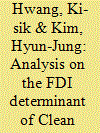

|
|
|
| 2 |
ID:
122748
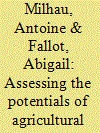

|
|
|
|
|
| Publication |
2013.
|
| Summary/Abstract |
The potential of agricultural residues has been assessed worldwide and at different scales. Interpreting results so as to determine the possible role of this biomass feedstock in energy supplies, requires a clearer understanding of the conditions in which residues can effectively be mobilized for energy production. The experience of India with hundreds of projects where agricultural residues are transformed to heat and power partially sold to the grid, is analyzed and checked against the residue potentials that have been assessed in this country. We find that, in the absence of technological improvements in biomass conversion, the apparent success of Indian bioenergy projects is not sustainable in the long run due to rapid exhaustion effects on residue availability, coupled with the increasing costs that would be difficult to compensate by higher electricity tariffs. We also identify there is a serious agricultural issue which needs to be addressed in regard to degraded soils; this could lead to the reallocation of all primary residues, as well as part of secondary residues to soil and livestock needs. Such perspectives are considered within three contrasted scenario storylines.
|
|
|
|
|
|
|
|
|
|
|
|
|
|
|
|
| 3 |
ID:
094962
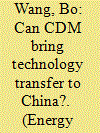

|
|
|
|
|
| Publication |
2010.
|
| Summary/Abstract |
China has undertaken the greatest number of projects and reported the largest emission reductions on the global clean development mechanism (CDM) market. As technology transfer (TT) was designed to play a key role for Annex II countries in achieving greenhouse gas emission reductions, this study examines various factors that have affected CDM and TT in China. The proportion of total income derived from the certified emissions reductions (CER) plays a key role in the project owners' decision to adopt foreign technology. Incompatibility of CDM procedures with Chinese domestic procedures, technology diffusion (TD) effects, Chinese government policy and the role of carbon traders and CDM project consultants all contribute to the different degrees and forms of TT. International carbon traders and CDM consultants could play a larger role in TT in China's CDM projects as investors and brokers in the future.
|
|
|
|
|
|
|
|
|
|
|
|
|
|
|
|
| 4 |
ID:
103458
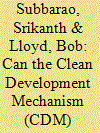

|
|
|
|
|
| Publication |
2011.
|
| Summary/Abstract |
The paper investigates whether the Clean Development Mechanism (CDM) under the Kyoto Protocol has played a significant role in the development of rural communities, specifically investigating uptake of small-scale renewable energy projects. The investigation involved an assessment of 500 registered small-scale CDM projects under the Kyoto Protocol in terms of their potential impact on the envisaged sustainable development goals for rural communities. Five case studies from the Indian subcontinent were also examined.
The paper concludes that the CDM in its current state and design has typically failed to deliver the promised benefits with regard to development objectives in rural areas. Successful projects were found to have had good community involvement and such projects were typically managed by cooperative ventures rather than money making corporations. The paper puts forward a new framework for the assessment of such benefits in the hope that future projects can be better assessed in this regard. The key problem, however, remains on how to deal with the inherent contradiction between development and sustainability.
|
|
|
|
|
|
|
|
|
|
|
|
|
|
|
|
| 5 |
ID:
088048
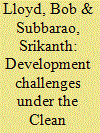

|
|
|
|
|
| Publication |
2009.
|
| Summary/Abstract |
The "Sustainable Development" aspect of the Clean Development Mechanism (CDM) under the Kyoto Protocol is examined, with regard to its current impact on crucial developmental issues.
The paper discusses the immediate and urgent global concerns of developmental needs, energy and climate change, whilst highlighting their influence on the poor in the developing world. The global responses to address the above concerns in terms of renewable energy technologies, policies and strategies that can be instrumental in addressing the issues are discussed, with main emphasis on the CDM under the Kyoto Protocol. The critical issue of whether the CDM can address poverty alleviation and sustainable development in developing countries is discussed in the context of existing market principles, transparency of the mechanism, economics and the daunting bureaucratic procedures involved.
The paper concludes that the CDM, if suitably modified, can go some way to address sustainable development and alleviate poverty for poor rural areas and not increase emissions by a focus on renewable energy technologies. This result can be achieved as the energy consumption of rural sectors is currently so small relative to developed economies that only small additional renewable energy generation capacities are needed to make a measurable difference.
|
|
|
|
|
|
|
|
|
|
|
|
|
|
|
|
| 6 |
ID:
162319
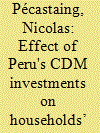

|
|
|
|
|
| Summary/Abstract |
The Clean Development Mechanism (CDM) under the Kyoto Protocol has two main objectives: Reducing emissions of greenhouse gases (GHGs) and contributing to sustainable development (SD) in developing countries. The empirical evidence indicates that the first goal has been fulfilled; however, the literature mostly provides ex-ante evidence regarding the second goal. This paper contributes to the literature by assessing the ex-post quantitative effect that CDM projects have had on SD (employment and monetary welfare) in Peru, a country ranked among the most important CDM investment host countries worldwide. The econometric model estimates the direct and indirect effects of the CDM projects’ investments on Peruvian households’ monetary welfare for 2011–2015. Our results suggest that CDM investments had a slight effect on household consumption expenditure and had no effect neither on employment nor in poverty alleviation. Our findings suggest the need to strengthen CDM’s institutional framework by identifying key development definitions and indicators.
|
|
|
|
|
|
|
|
|
|
|
|
|
|
|
|
| 7 |
ID:
125454
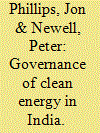

|
|
|
|
|
| Publication |
2013.
|
| Summary/Abstract |
This paper explores the ways in which clean energy is being governed in India. It does so in order to improve our understanding of the potential and limitations of carbon finance in supporting lower carbon energy transitions, and to strengthen our appreciation of the role of politics in enabling or frustrating such endeavors. In particular we emphasize the importance of politics and the nature of India's political economy in understanding the development of energy sources and technologies defined as 'clean' both by the United Nations Clean Development Mechanism (CDM) and leading international actors. By considering the broad range of institutions that exert formal and informal political influence over how the benefits and costs of the CDM are distributed, the paper highlights shortcomings in the narrow way in which CDM governance has been conceptualized to date. This approach goes beyond analysis of technocratic aspects of governance - often reduced to a set of institutional design issues - in order to appreciate the political nature of the trade-offs that characterize debates about India's energy future and the relations of power which will determine how, and on whose terms, they are resolved.
|
|
|
|
|
|
|
|
|
|
|
|
|
|
|
|
| 8 |
ID:
121369


|
|
|
|
|
| Publication |
2013.
|
| Summary/Abstract |
This study aims to investigate the barriers which impede the promotion of Energy Efficient Building (EEB), and to propose solutions to alleviate these barriers by capturing the benefits from Clean Development Mechanism (CDM), in the context of China. Through comprehensive literature review, eight types of significant barriers are identified, including weak enforcement of government policies, market inefficiency, information barrier, small and scattering buildings, fragmentation of the construction industry, perceived high risk, higher initial cost, and difficulty in energy management. To overcome the barriers, the potential of CDM to facilitate EEB promotion is then discussed. These barriers are verified and potential solutions are tested with a questionnaire survey conducted among five professional groups in China, i.e. designers, project managers, quantity surveyors, marketing managers and property managers. The results suggest that they generally identified with the barriers. However, their limited awareness of CDM implies that corresponding policies should be formulated and implemented to improve their capability of providing more EEBs with CDM.
|
|
|
|
|
|
|
|
|
|
|
|
|
|
|
|
|
|
|
|
|